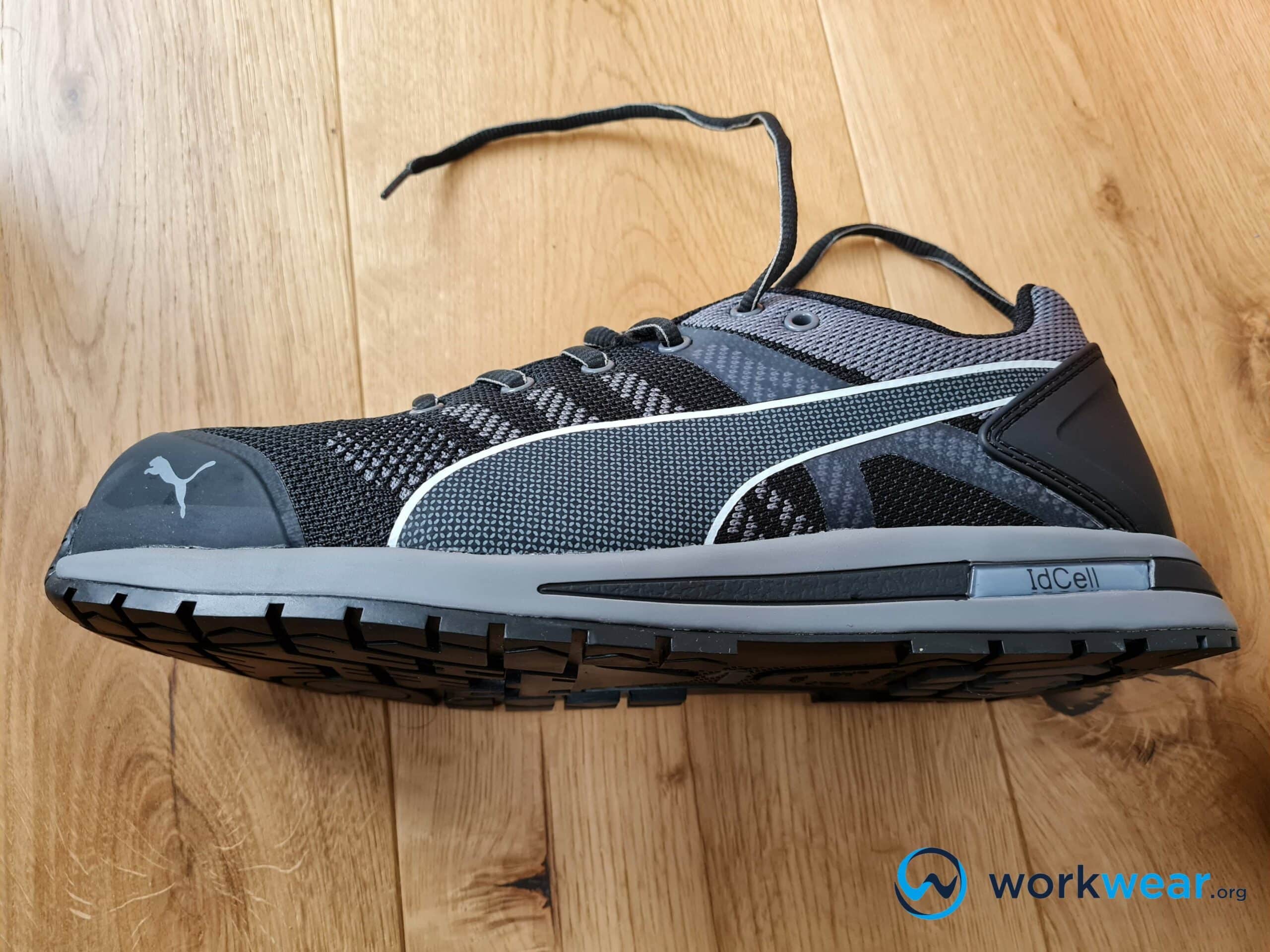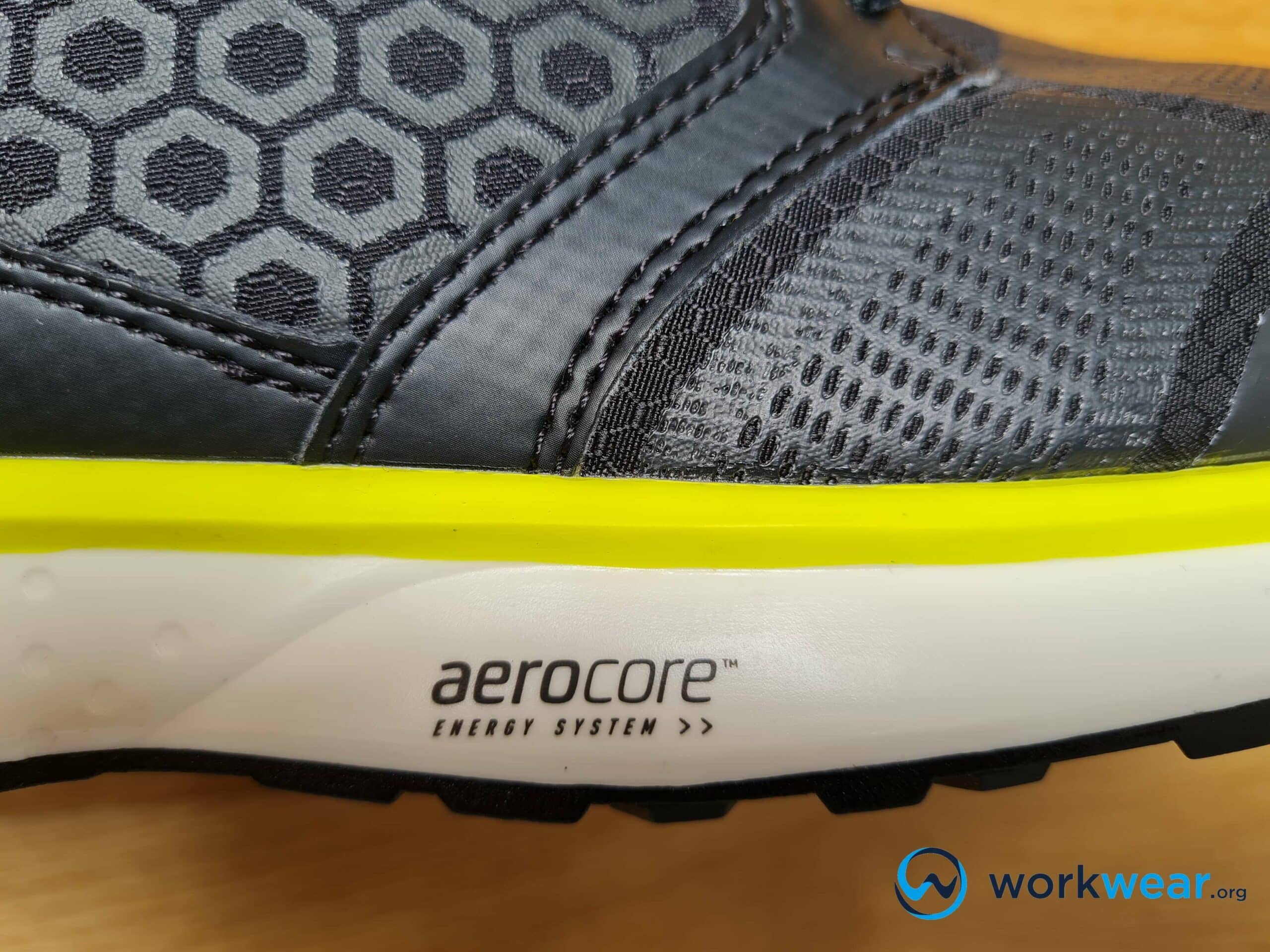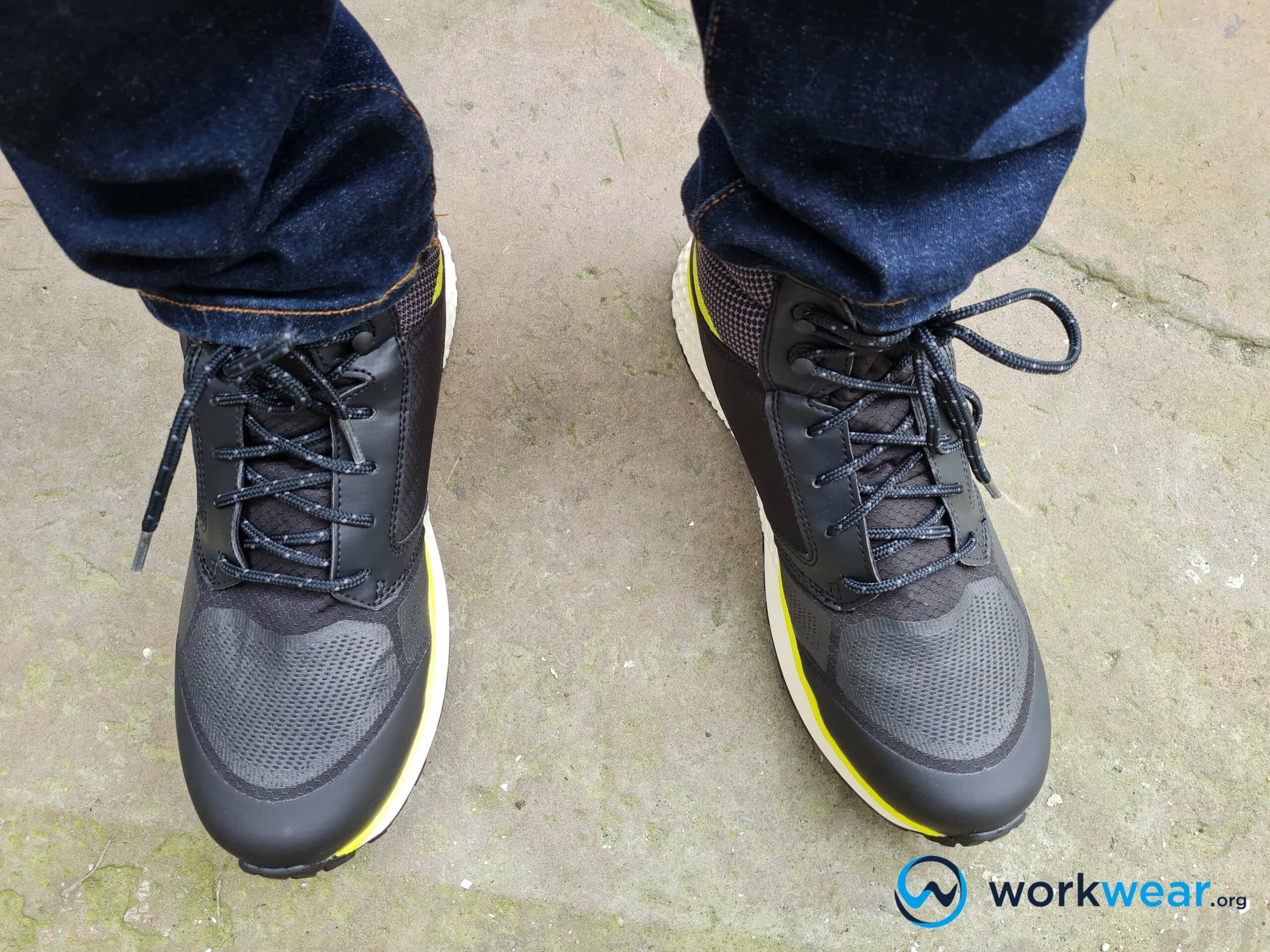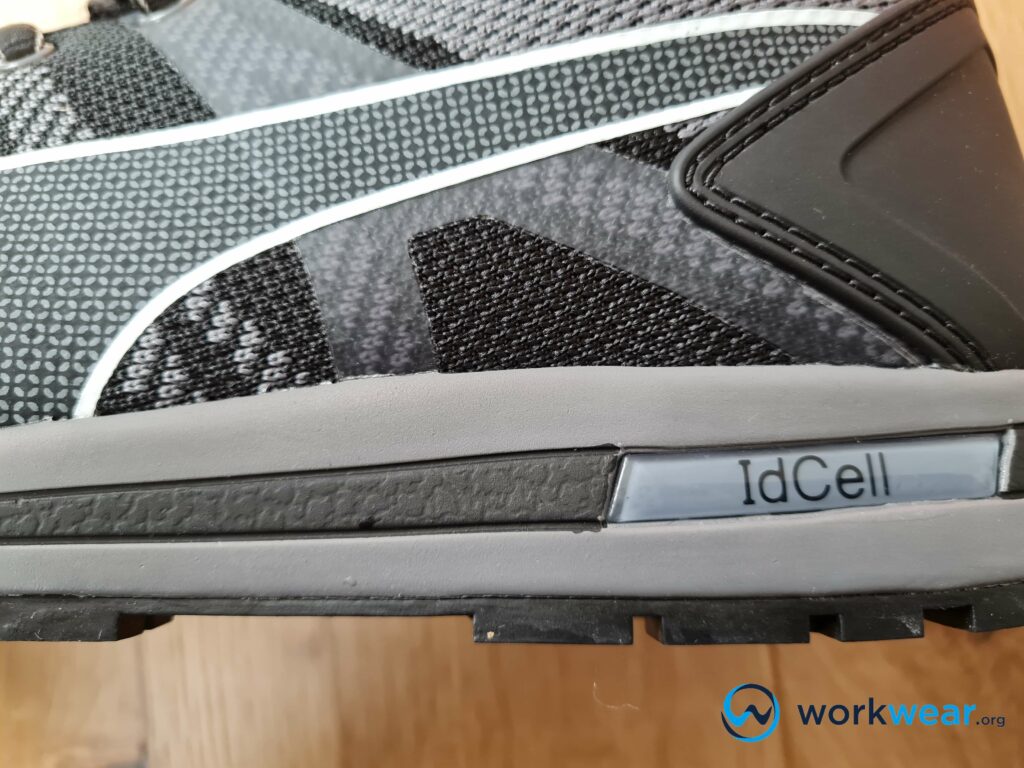Shock Absorption in Footwear Explained – Pros, Cons and Uses
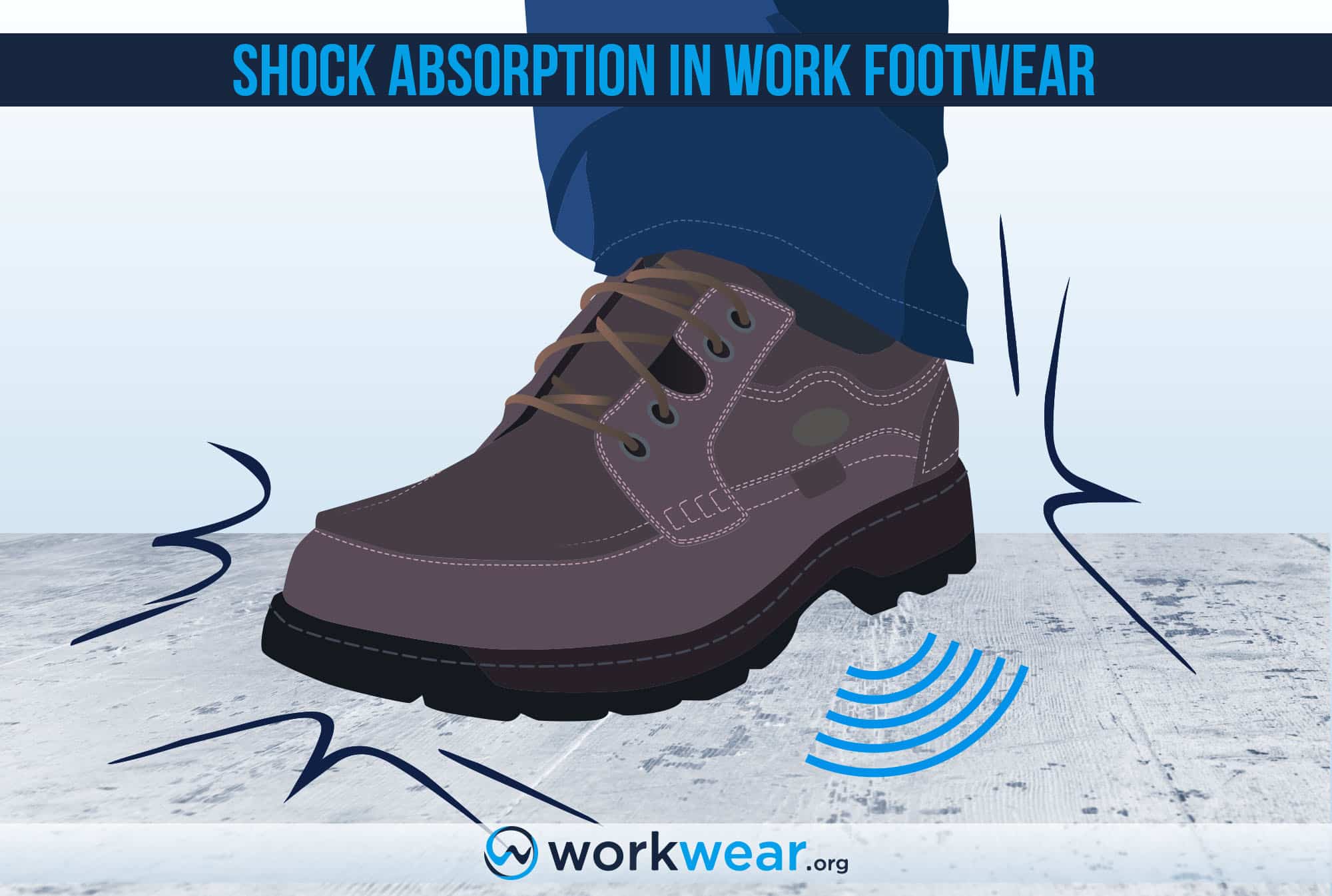
Jobs that involve long hours of walking or standing in place can result in significant foot discomfort. The problem worsens when staying upright or moving around on hard surfaces like concrete floors.
To help ease the burden of carrying the body’s weight around all day, high-quality work footwear typically comes with shock absorption qualities that can be built into different components.
Shock absorption in work footwear can result in a significantly more comfortable experience as the muscles and joints are saved from the painful impact of continuous walking on unforgiving surfaces. In this article, we’ll discover more about shock absorption in work footwear and its benefits and weaknesses.
Where is Shock Absorption Used in Work Footwear?
Insole
Insoles or footbeds are in direct contact with the bottom of the feet.
They can be enhanced with shock-absorbing qualities to protect the feet, saving them from becoming severely strained.
In the Timberland Reaxion Work Boot, the insole features exclusive Anti-Fatigue technology that absorbs most of the impact of walking while delivering energy back to every step.
Midsole
Midsoles provide another layer of cushioning (under the insoles) for the feet while also offering much-needed support.
In the Skechers Work Bulklin Lyndale Shoe, the midsole’s shock absorption soaks up the impact. As a result, it distributes it evenly across the foot, preventing fatigue from developing throughout all-day walking or standing on hard surfaces.
Heel
The heel often gets the brunt of the impact as it’s the first part of the footwear to meet the ground with each step.
Work footwear may be designed with reinforced heels to protect against uncomfortable impact.
An example of this can be seen in the Puma Elevate Composite Toe Shoe’s heel, which is enhanced with an exclusive idCELL element for maximum shock absorption.
Key Advantages of Shock Absorption in Work Footwear
Absorbs and distributes the impact
Shock-absorbing elements in work footwear soak up the impact and spread it evenly across the feet instead of letting it focus on only one area (such as the heel).
This can help prevent foot fatigue from developing, especially over long hours of standing or walking.
Prevents joint and muscle pain
Work footwear with shock-absorbent features soaks up the force created when the foot strikes the ground.
The footwear’s components take in the shock and prevent it from traveling to the joints and muscles, protecting them from the brutal impact and its uncomfortable effects.
Makes prolonged walking or standing more comfortable
Shock absorption soaks up and distributes the force from hours of standing or walking. The energy is then released and used to propel the next steps.
By protecting the joints and muscles from becoming severely strained, walking is more comfortable to manage even over long periods.
May reduce the risk of injuries
Strained muscles and joints (from continuous walking or standing) are more prone to develop serious injuries.
Work footwear with shock-absorbing qualities takes in the impact to greatly minimize its negative effects on the muscles and joints, reducing the threat of long-term injuries.
Can enhance footwear durability
Shock-absorbent sections of work footwear draw in the force created every time the foot strikes the ground. However, as specific components soak in the impact, other parts – such as the outsole – are spared from taking in the shock.
This can help the other components preserve their strength and appearance for much longer.
Key Disadvantages of Shock Absorption in Work Footwear
Can make the footwear pricier
Shock-absorbing elements may be designed using premium materials or advanced technologies, which can significantly increase footwear’s price.
Often, work footwear options offering strong shock absorption have higher prices than products without this enhancement.
May add extra weight to the footwear
Sometimes, additional sections or materials must be fitted into work footwear to make them shock absorbent.
These elements may add a bit of extra weight to the footwear, although this isn’t always the case.
Uses of Shock-Absorbing Work Footwear
Shock-absorbing footwear is suitable for work conditions requiring long hours of walking, standing, running, or carrying heavy objects around, such as those experienced by the following jobs:
- Construction workers
- Loggers
- Carpenters
- Auto mechanics
Comparison Table
|
Pros |
Cons |
|
|---|---|---|
| Shock-Absorbing Work Footwear |
|
|
Personal Testing Experience
We had the chance to test two work footwear options with reliable shock absorption. The Timberland Reaxion Work Boot showcases the exclusive Anti-Fatigue technology for outstanding shock absorption and energy return, delivering a comfortable walking experience all day. It’s sporty and lightweight even though it has composite toes to guard against impact and compression threats – although the plastic lace hooks don’t look sturdy enough to last for a long time. Meanwhile, the Puma Safety Elevate Composite Toe Shoe has a unique idCELL component fitted into the heel to soak up most of the impact on heel strike, with an anatomically shaped footbed to provide strong arch support. It has composite toe caps shielding the toes against heavy falling items and an anti-puncture midsole; it’s a bit heavier compared to other work footwear with similar sneaker-like styles.
Conclusion
Shock-absorbing features in work footwear enhance overall foot comfort, making walking and moving on the job easier without sacrificing efficiency. Shock absorption can be built into the insole, midsole, or heel sections, depending on the footwear’s design and the materials and technology used. Work footwear with shock-absorbent features soak up and evenly distribute the force of every heel strike, significantly reducing the risk of muscle or joint pain and injuries, can make walking for long hours more comfortable, and can save other footwear parts from early deterioration. However, shock absorption in work footwear can also increase prices and add unwelcome bulk or weight.
FAQs
- What materials are used in midsoles for shock absorption?
- EVA and PU are often used in midsoles of high-quality footwear. These materials offer great shock absorption, cushioning the feet against the impact of walking on hard ground for improved comfort.
- Can strong arch support replace good shock absorption to prevent foot discomfort?
- While strong arch support is important for preventing foot discomfort, it’s equally crucial to have this element with reliable shock absorption to ensure a comfortable experience while walking or standing for hours.
- Do shock-absorbing elements need to be rigid or flexible?
- Shock-absorbent components should be flexible enough to let the feet move naturally, promoting unhampered agility and superior comfort.
- Is shock absorption required for all work footwear?
- Shock-absorbing features are not necessarily required for all types of work footwear. However, these are crucial elements for work boots and shoes that will be used for extended periods of walking, standing, running, or carrying heavy loads because they can protect the feet against pain and injuries.
